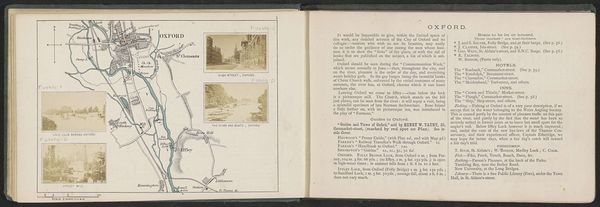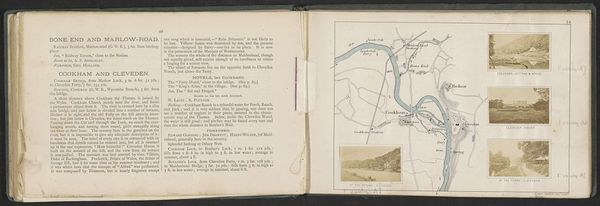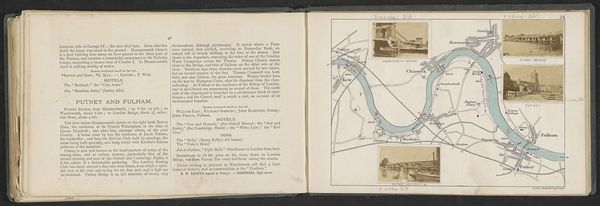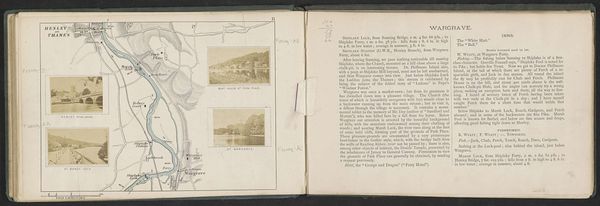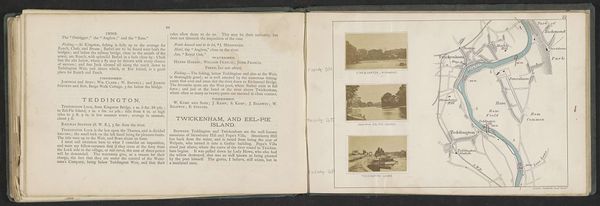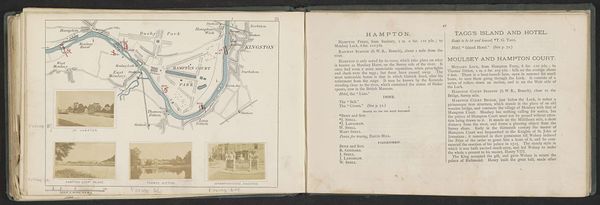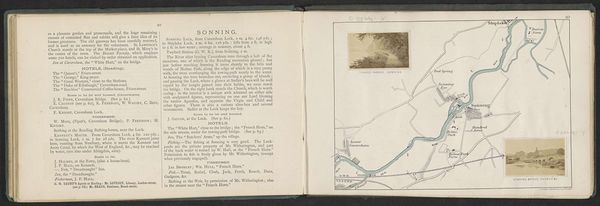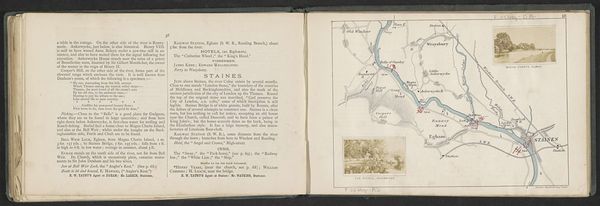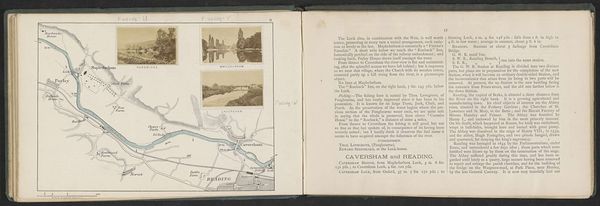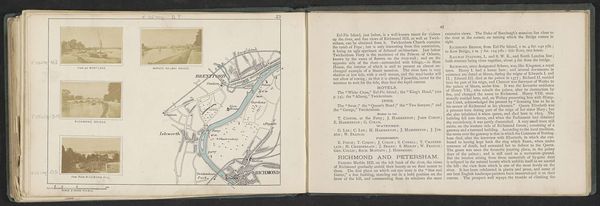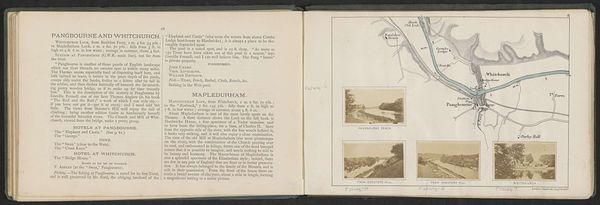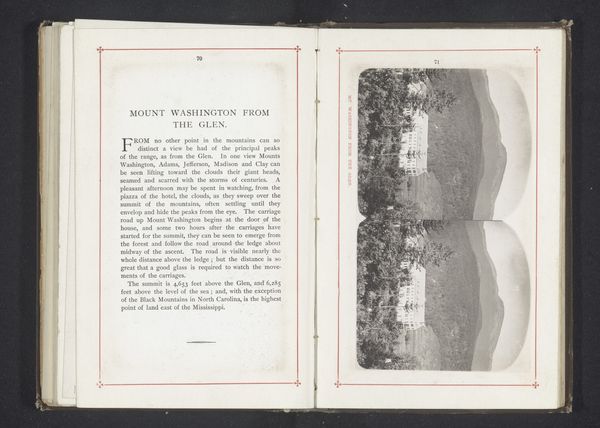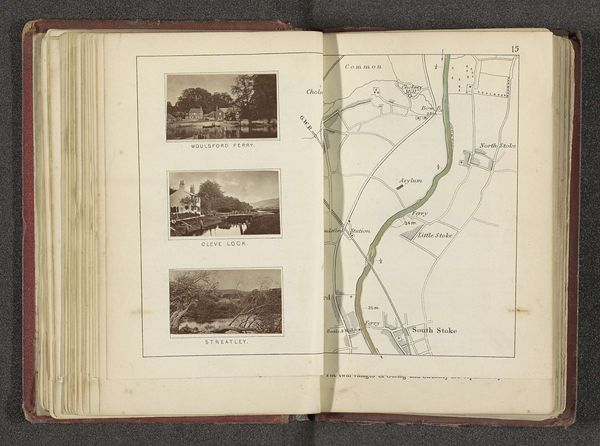
drawing, paper, pen
#
drawing
#
aged paper
#
ink paper printed
#
sketch book
#
hand drawn type
#
landscape
#
river
#
paper
#
personal sketchbook
#
ink colored
#
pen work
#
sketchbook drawing
#
pen
#
cityscape
#
storyboard and sketchbook work
#
sketchbook art
Dimensions: height 31 mm, width 52 mm
Copyright: Rijks Museum: Open Domain
Curator: Here we have Henry W. Taunt's "Gezicht op een abdij van Medmenham," or "View of an Abbey of Medmenham," rendered in 1871 using pen and ink on paper. Editor: There's a tangible, almost melancholic quality to this sketchbook page. The sepia tones and the delicate, spidery linework feel steeped in another time. It really shows that the artist did not create the map from memory. Curator: It’s quite telling. Taunt, known for his photography, reveals a dedication to meticulous record-keeping through his drawings. Notice how the abbey, with its historical weight, becomes another node in a broader network, tied together by waterways and infrastructure. This almost transforms the Abbey itself into a sort of manufactured commodity. Editor: Indeed. The way the map is laid out emphasizes control and measurement. And, look, we're reminded of paper’s fundamental nature—processed pulp, manufactured for a purpose, inscribed and consumed with information, making something seemingly intangible concrete. Curator: What speaks to me is the implied continuity, the sense of tradition. Even this rather practical mapping, has echoes of pilgrimage, of charting sacred spaces and journeys that have shaped collective identity over time. And as such the Abbey is a testament to cultural memory Editor: And yet, the commercial aspects aren’t dismissed at all. One is equally reminded of industry. It almost feels like you could travel here now if you just hopped on the train with enough coin to do so. In a sense, what you feel in a historical place, such as the one represented in this map, relies on its accessibility, and if there were no financial resources to make such access available, these places could only remain historical landmarks for local peoples to remember them for their culture, their traditions, their religions, or other various historical-familial aspects, rendering our experience here, with the guide, completely inauthentic, or to say the least, superficial, something like simulacrum Curator: In the end, it seems, we are all visitors charting our own landscapes, both internal and external. I'm left considering the long afterlife of symbols. Editor: Agreed, and similarly, what’s intriguing here is how a commonplace substance elevates to something significant; one remembers where something comes from, and thus may better be able to grasp something's full meaning in the larger scope of its purpose.
Comments
No comments
Be the first to comment and join the conversation on the ultimate creative platform.
